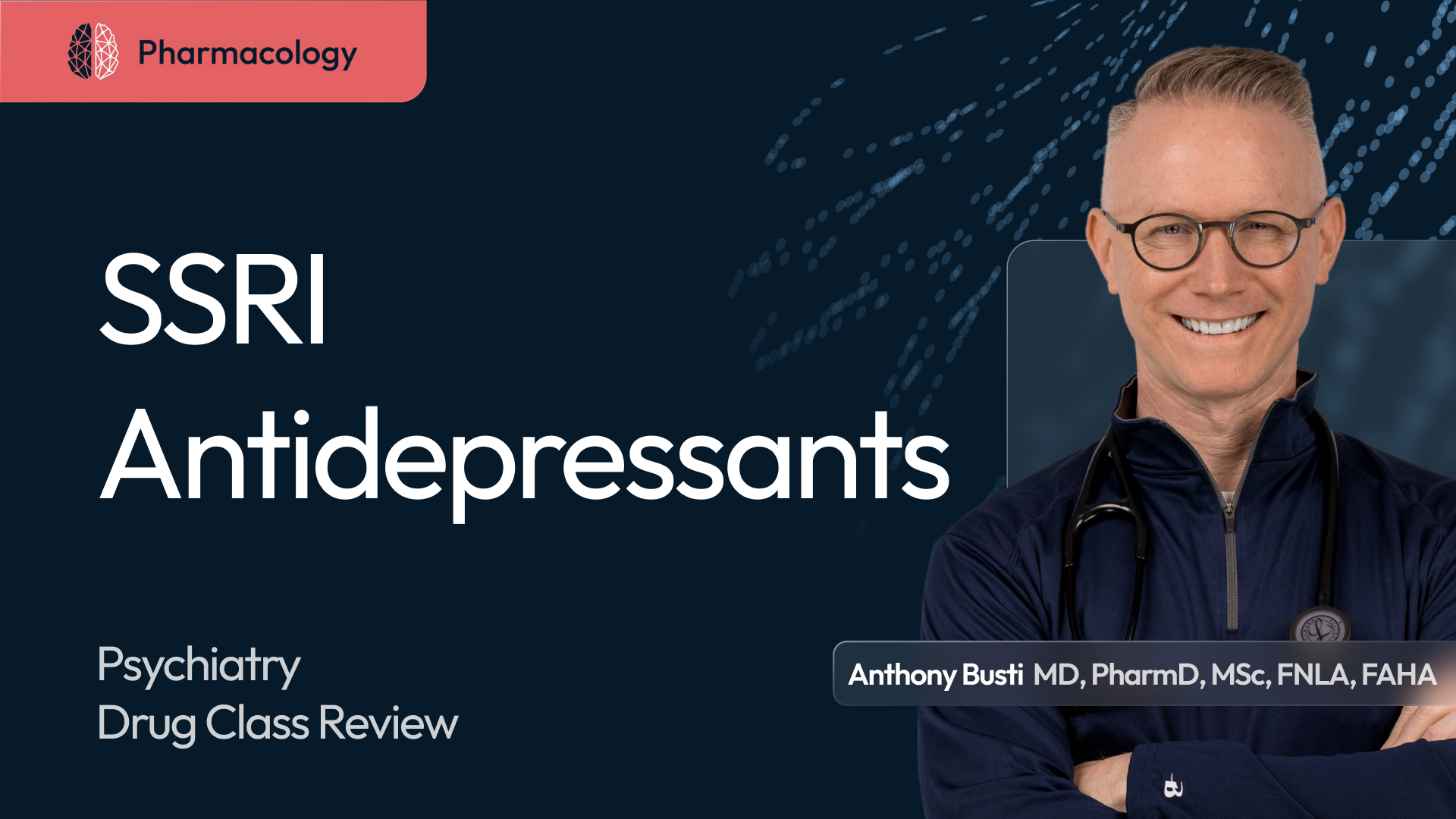
In this This Is Why pharmacology review, Dr. Busti unpacks the SNRIs—how they evolved as “cleaner, safer TCA-like” options and why they’re often the next step after SSRIs for major depressive disorder and anxiety disorders. We compare the class head-to-head and zoom into real-world decisions: when SNRIs shine (e.g., pain comorbidities), when to be cautious (e.g., hypertension, SIADH/hyponatremia, discontinuation syndrome), and how dose and kinetics shape outcomes (e.g., venlafaxine as SSRI at low dose, true SNRI at higher doses).
You’ll get crisp pearls on the key agents—duloxetine, venlafaxine, desvenlafaxine, milnacipran, levomilnacipran—including indications beyond MDD (GAD, panic/social anxiety, neuropathic pain, fibromyalgia, chronic MSK pain; regional use in stress urinary incontinence), common adverse effects, interaction traps (e.g., MAOI washouts, serotonergic stacking), and a practical monitoring & counseling checklist you can use tomorrow.
Disclaimer: This content is for educational purposes only and is not intended to provide medical advice, diagnosis, or treatment. Always seek the advice of your physician or other qualified health provider with any questions you may have regarding a medical condition. Never disregard professional medical advice or delay in seeking it because of something you have heard in this content.
Chapter Table of Contents
00:00 Introduction & Why SNRIs Matter
02:50 Drugs in the Class & Indications
07:10 Mechanism of Action Explained
11:40 Clinical Applications & Side Effects
18:20 Pharmacokinetics & Interactions
23:55 Monitoring & Counseling Essentials
27:30 Summary & Clinical Takeaways
More than just access—it’s where understanding deepens.
Create a free account or log in to gain access to this content!

Dive Deeper
Bonus Video (ad free)
Downloads
SNRI Antidepressants Tables
Dive Deeper
Bonus Video
Downloads
SNRI Antidepressants Tables

























